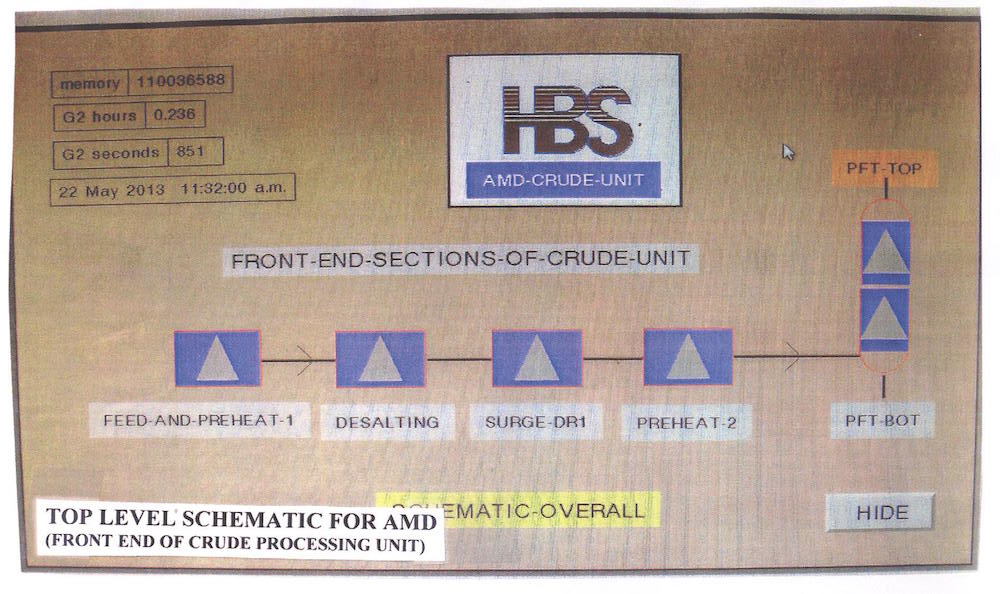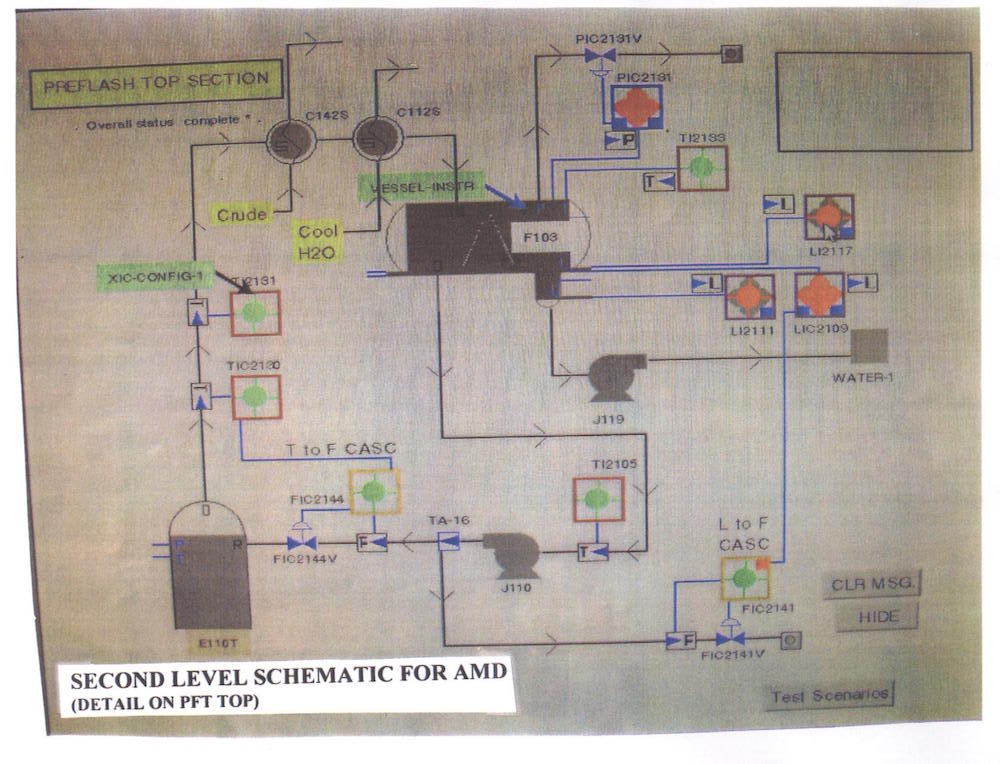Advanced Monitoring and Diagnostics (AMD) is a modular real-time on-line advisory knowledge base (KB) developed using Gensym's G2 . AMD is designed for application to continuous processes typified by refineries and chemical plants. It is an expert system based on first principles and principles of control which differentiates it from traditional heuristics based expert systems. It also has a generic form which results in more consistent solutions with exceptional portability and robustness. AMD draws upon basic principles to deal with a broad range of process situations. It is designed for use as both a solution and a toolkit and is expected to provide improved operational efficiency and substantial savings to process operations
AMD is easily configured to provide comprehensive monitoring, analysis, diagnosis and remedial advice for many process states. This includes detection and warning of impending problems along with coverage for unavoidable alarms. AMD is modular.
The core module’s purpose is to assure that
a) control system components are logically installed and configured,
b) sensory devices are functioning properly, and
c) sensor status indications are believable.
The control module utilizes the principles of process control to:
a) evaluate the behavioral response of control system components,
b) analyze and diagnose control element behavior under both alarm and non-alarm conditions,
c) classify problem cause(s) as being of control-element and/or process origin, and
d) provide analytical, diagnostic and remedial advice for abnormal states originating with control-elements,
The process module applies engineering principles applicable to fluid feeds and is invoked for problems having a non-control-equipment origin. Here, conservation of mass, energy and momentum, the gas law, equation of state and control algorithms are utilized to a) analyze and diagnose of problems originating with process equipment and
b) to generate analytical, diagnostic and remedial messages.
The overall KB allows for inclusion and use of proprietary knowledge in the problem solving process.
A graphical operator intereface shows detail on process unit makeup and it displays status indications, problem identifications and causes, plus advice for remedial actions. The interface is layered and is comprised of process schematics, P&ID’s information and custom displays. The top layer shows an overview schematic of the process unit. Major components are represented by color coded icons indicating the presence or absence of abnormal states. (Solid color = normal, superimposed red triangle = problem). A secondary diagram with more detail is contained in a sublayer of the main icon, Here one can see individual elements such as pumps, valves, sensors, controllers, exchangers, vessels, etc as well as sensory information (values of PV, SP , OP, Mode). On this secondary diagram, elements with problem states are identified and messaging is available to show details on problem analysis with remedial advisories
An early version of AMD has had some real world testing at a major oil company refinery and it performed quite well by providing warnings of deteriorating conditions which avoided alarm state anxiety and downtime. Financial benefits were not quantified. Further development of AMD, which is not yet complete, has been done offline
Like this entry?
-
About the Entrant
- Name:Joseph Harrington
- Type of entry:individual
- Software used for this entry:Gensym "G2" v5.15 as shell for application
- Patent status:none





